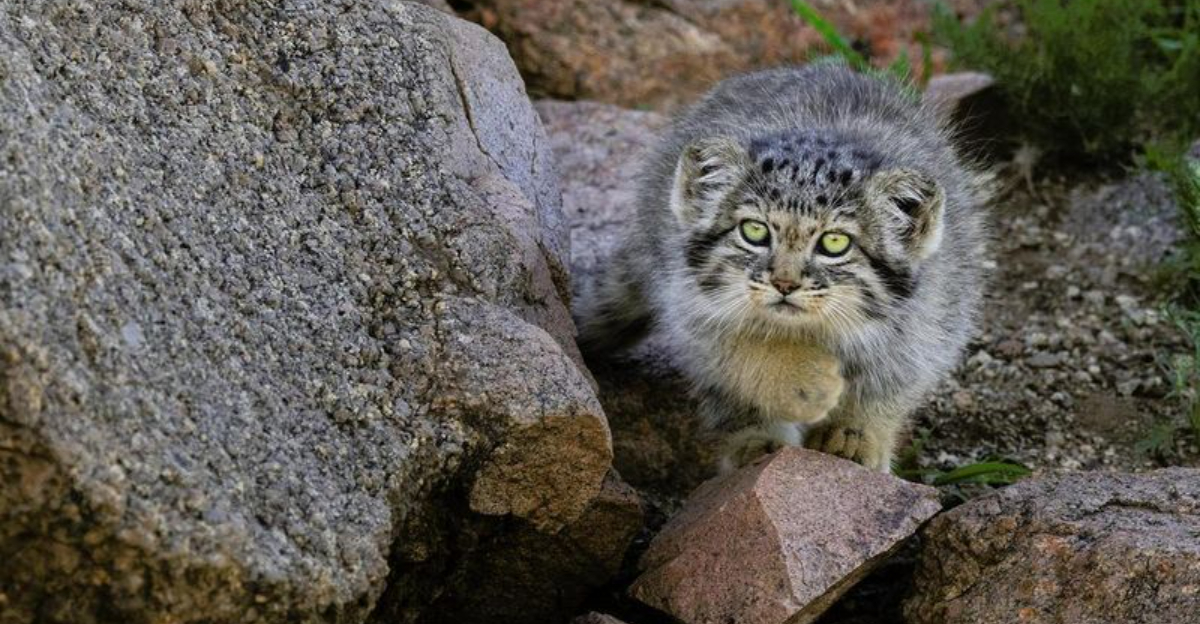📖 Table of Content:
Explore the fascinating world of lesser-known big cat species, each with its unique charm and survival story. These elusive creatures inhabit diverse ecosystems, from the dense rainforests of Borneo to the high-altitude Andes. Join us in discovering the hidden gems of the feline world and the conservation efforts that aim to protect them.
1. Sunda Clouded Leopard
Imagine a leopard that seems to melt into the shadows of Borneo’s rainforests. The Sunda Clouded Leopard, with its darker fur and mysterious cloud-like patterns, is a master of disguise. Arboreal and elusive, it glides through the trees with unmatched grace. Sadly, deforestation threatens its existence, making conservation efforts vital. Known for its arboreal lifestyle, this cat is rarely seen on the ground. You’d be lucky to glimpse one in Sumatra or Borneo. Its survival story is as compelling as its beauty, capturing the imagination of all who hear it.
2. Andean Mountain Cat
Perched high in the Andes, the Andean Mountain Cat roams the rocky landscapes like a ghost. With fur as silvery-grey as the stones it hides among, this cat is perfectly adapted to the cold, arid environment. Its elusive nature makes it a rare sight, and conservationists face challenges protecting its remote habitat. Known for its solitary and nocturnal habits, it remains a mystery to many. The cat’s survival in such a harsh climate is a testament to its resilience, and its presence is a reminder of nature’s adaptability.
3. Pallas’s Cat
With a face that could launch a thousand myths, the Pallas’s Cat seems almost otherworldly. Native to Central Asia’s steppes, its thick fur and flattened face are distinctive features. This cat thrives in cold, arid climates, hunting small mammals and birds. Its elusive behavior has left it one of the least-studied wild cats. Often seen peering from behind rocks in Mongolia, the Pallas’s Cat has an enigmatic charm that captivates those fortunate enough to spot it. Its survival in such a harsh environment speaks to its adaptability and tenacity.
4. Black-footed Cat
In the heart of Southern Africa’s savannas, the Black-footed Cat hunts with a prowess that belies its small size. Known as the continent’s smallest wild cat, it’s an efficient predator, capable of catching thousands of rodents annually. Nocturnal and solitary, it thrives in arid environments, using its agility to maneuver through the landscape. Despite its size, it’s a formidable hunter, and its resilience is awe-inspiring. Conservationists are working to protect this tiny predator, as its survival continues to be threatened by habitat loss and human activity.
5. Iriomote Cat
On the isolated Iriomote Island, the Iriomote Cat is a symbol of mystery and survival. Critically endangered, with only around 100 individuals left, this cat is a skilled swimmer, often seen navigating the island’s mangrove forests. Its nocturnal habits and elusive nature make it a rare sight, and conservation efforts are crucial for its survival. Known for its unique habitat, the Iriomote Cat is a fascinating blend of land and water prowess. Its struggle against extinction is a poignant reminder of the fragility of nature.
6. Jaguarundi
Graceful and sleek, the Jaguarundi is unlike any other. Found from southern Texas to central Argentina, this cat’s elongated body and short legs give it an almost weasel-like appearance. Unlike most felids, it’s primarily diurnal, roaming through dense forests and scrublands in search of diverse prey. Its adaptability to various environments is impressive. Often seen in the daylight, it hunts birds, rodents, and more. The Jaguarundi’s unique appearance and habits make it a subject of curiosity and admiration for those lucky enough to spot it.
7. Fishing Cat
With webbed feet and a penchant for water, the Fishing Cat is a remarkable creature of the wetlands. Native to South and Southeast Asia, it thrives in mangrove swamps and riverine areas, hunting fish and small aquatic animals with precision. Its amphibious lifestyle is threatened by wetland degradation, making conservation efforts essential. Known for its unique hunting techniques, the Fishing Cat is a testament to nature’s ingenuity. Its agile movements and keen senses make it a master of its aquatic domain, captivating those who witness its skills firsthand.







